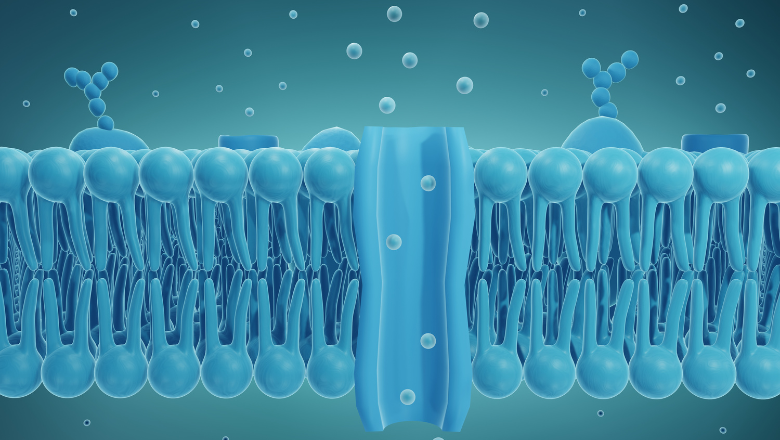Our study shows how to design and fine-tune membrane-spanning peptide channels with specific properties. Researchers and other scientists can now take up these blueprints and use them in their own work."
Professor Mark Wallace
09 May 2025
Scientists break new ground on design rules for creating customisable peptide channels
King’s researchers establish principles for designing precise artificial membrane channels with potential applications in medicine and molecular sensing.

Scientists have successfully established rules for designing artificial channels that can form precise openings in cell membranes.
The breakthrough study from King's College London, Japan's RIKEN institute, and the University of Bristol represents a significant advancement in biomolecular design.
Cell membranes contain specialised protein channels that control what enters and exits our cells. These channels are essential for nearly all biological processes, from signalling between nerve cells to controlling heartbeat. The international research team has now demonstrated how to design components of those structures, peptides, that self-assemble into channels with customisable properties.
"Our study shows how to design and fine-tune membrane-spanning peptide channels with specific properties," explains Professor Mark Wallace, Professor of Chemistry at King's College London and co-author. "Researchers and other scientists can now take up these blueprints and use them in their own work."
The researchers combined computer modelling with methods capable of recording the responses of individual channels to create artificial channels made of exactly five, six, or seven peptides arranged in barrel-like structures.
Each design created channels with different properties, offering a route to enable control over how ions and molecules move through membranes. The team discovered that these engineered peptide assemblies can switch between static and dynamic states. This behaviour reveals new insights into how peptides interact with cell membranes and opens pathways to significant applications.
By helping shed further light on the design principles of these peptide assemblies, we're feeding into the collective research brain which might one day break the ceiling on new potential advancements and treatments."
Dr Ai Niitsu, RIKEN Institute's Laboratory for Dynamic Biomolecule Design
"Dynamic systems that move, like ion channels, have so far been impossible for tools like AlphaFold to simulate," notes Dr Ai Niitsu at RIKEN's Laboratory for Dynamic Biomolecule Design. "By helping shed further light on the design principles of these peptide assemblies, we're feeding into the collective research brain which might one day break the ceiling on new potential advancements and treatments."
The study, published in the Journal of the American Chemical Society, opens doors to developing treatments for conditions affected by faulty ion channels, such as epilepsy and cardiac arrhythmia. The precisely controlled pore sizes could also advance nanopore sensing – a technology that uses tiny channels to detect and analyse individual molecules, with applications ranging from DNA sequencing to detecting specific chemicals.

